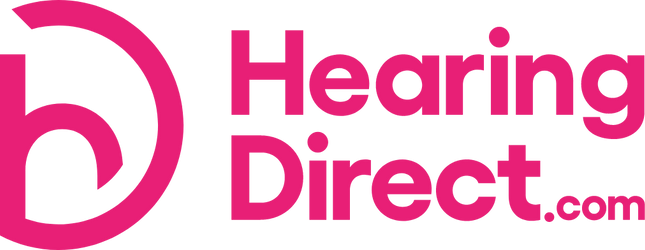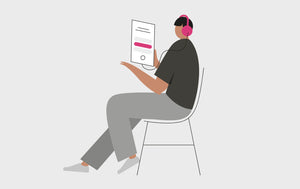What is Conductive Hearing Loss?
What is Conductive Hearing Loss? It is one of the most common forms of hearing loss. Read this informative guide to learn more about:
- What is Conductive Hearing Loss?
- Conductive Hearing Loss Symptoms
- Conductive Hearing Loss Causes
- The correct Conductive Hearing Loss Treatment
At Hearing Direct, you will find a number of management solutions to help properly and effectively manage hearing loss.
What is Conductive Hearing Loss?
Conductive hearing loss (CHL) occurs when there is an obstruction or damage to the outer or middle ear that prevents sound from traveling to the eardrum and to tiny bones in the inner ear. There may be something blocking the ear canal, such as ear wax or fluids, or the hearing loss might come from an infection or illness. An ear infection or a perforated eardrum are also possible causes.
Conductive hearing loss usually causes the "volume" of sounds to seem lower. This condition can be either temporary or permanent and shares similar characteristics to clogged ear. Conductive hearing loss treatment is more straightforward than sensorineural hearing loss. If you believe you may be experiencing conductive hearing loss, we recommend that you consult an audiologist or ENT professional.
Conductive Hearing Loss Symptoms
CHL primarily affects the ability to perceive the loudness of sounds, but not the clarity. You may find you have some or all of the following symptoms:
- Difficulty in hearing speech
- A sense that your own voice sounds different
- Easier to hear out of one ear than the other
- The sensation of pain in one or both ears
- A sensation of pressure in one or both ears
- A strange odour from the ear
Symptoms can differ depending on which part of the ear is the root cause or multiple symptoms may present themselves at once. Those with CHL often find that increasing the level of volume of TVs, music or radio is all it takes to provide a notable improvement in their ability to hear. Although not ideal, this could be a temporary quick-fix for the condition until it is properly dealt with.
Mixed Hearing Loss can occur when you have a combination of both conductive and sensorineural symptoms and this is known as mixed hearing loss. For this reason it's helpful to know the what the difference is between Conductive and Sensorineural Hearing Loss.
Conductive Hearing Loss Causes
Conductive hearing can be caused by a variety of problems. Some of the causes include:
- Ear wax build up
- Accumulation of fluid in the middle ear
- Abnormal bone growth in the middle ear (otosclerosis)
- Middle ear infections (otitis media)
- Perforation of the eardrum
Much like the symptoms, the causes may affect one part of the ear or several parts. Depending on which part of the ear is causing the loss, fixing the hearing loss may require different methods. A licensed audiologist or medical practitioner should be able to correctly diagnose the root cause of CHL and suggest appropriate methods of management and treatment.
The Correct Conductive Hearing Loss Treatment
You should always seek the advice of a medical professional to find out the root cause of a hearing loss problem and get the correct treatment. Unlike sensorineural hearing loss, conductive hearing loss can be reversed and effectively managed with the right form of treatments. Sometimes you may still need medical or surgical treatments to correct the condition. For instance, when infection or abnormal growths are present, then medical procedures may be necessary.
With care, you can treat Conductive Hearing Loss at home. Clearing excessive wax or fluids out of the ear canal can often solve the problem. In the case of wax build up, ear wax removal tools such as syringes, extractors or cleaners can help resolve the situation. Make sure you always use the right tool for the job to avoid damage to your ear canal or ear drum. That's where we come in... At Hearing Direct, we are able to offer a number of key ear hygiene products such as ear cleansers and wax removers to help eradicate this type of hearing loss.
Earpal Wax Remover

The Earpal ear wax remover is one of the safest wax extraction tools on the market. Due to its expert design, the Earpal ear wax remover cannot touch or perforate the eardrum by accident. As a result, your ears and hearing will avoid damage during the ear cleaning process. It is also safer than Cotton Buds.
Earol olive oil spray

Earol olive oil spray is designed to assist with the extraction of ear wax by softening the wax. When wax builds up, it can become uncomfortable and irritable.
Further Reading
You may find the following posts of interest:
- Mild Hearing Loss Explained
- What is Sensorineural Hearing Loss?
- Age-Related Hearing Loss: Causes, Symptoms and Management
- What is Noise Induced Hearing Loss?
Check Your Hearing Online For Free
We have created our very own online hearing test so you can check your hearing for free in the comfort of your own home. All you will need is a few free minutes and some ear or headphones. Once the test is complete, you will get your results instantly via email, and based on the outcome of the hearing test, you may be encouraged to take further action.
About Hearing Direct
We are one of the world's leading hearing aid specialists. HearingDirect offers a wide range of affordable products, as well as information resources to help improve the quality of life for the hard of hearing. We sell:
- Hearing aids,
- Batteries,
- Accessories such as earplugs,
- and amplified devices such as super loud alarm clocks and amplified phones.
Don't forget to like our Facebook Page
Author: Joan McKechnie

After qualifying as a Speech-Language Pathologist and Audiologist Joan has spent most of her 20 year career in hearing-care related roles. She has a wealth of experience within the hearing aid and hearing rehabilitation fields and has worked in manufacturing environments with two hearing aid companies helping to develop products and roll out new technologies. Joan has been involved with Hearing Direct since its launch and enjoys the online retail environment which seeks to provide easier access to hearing products and accessories. She is HCPC registered. Read Joan's full bio here.


